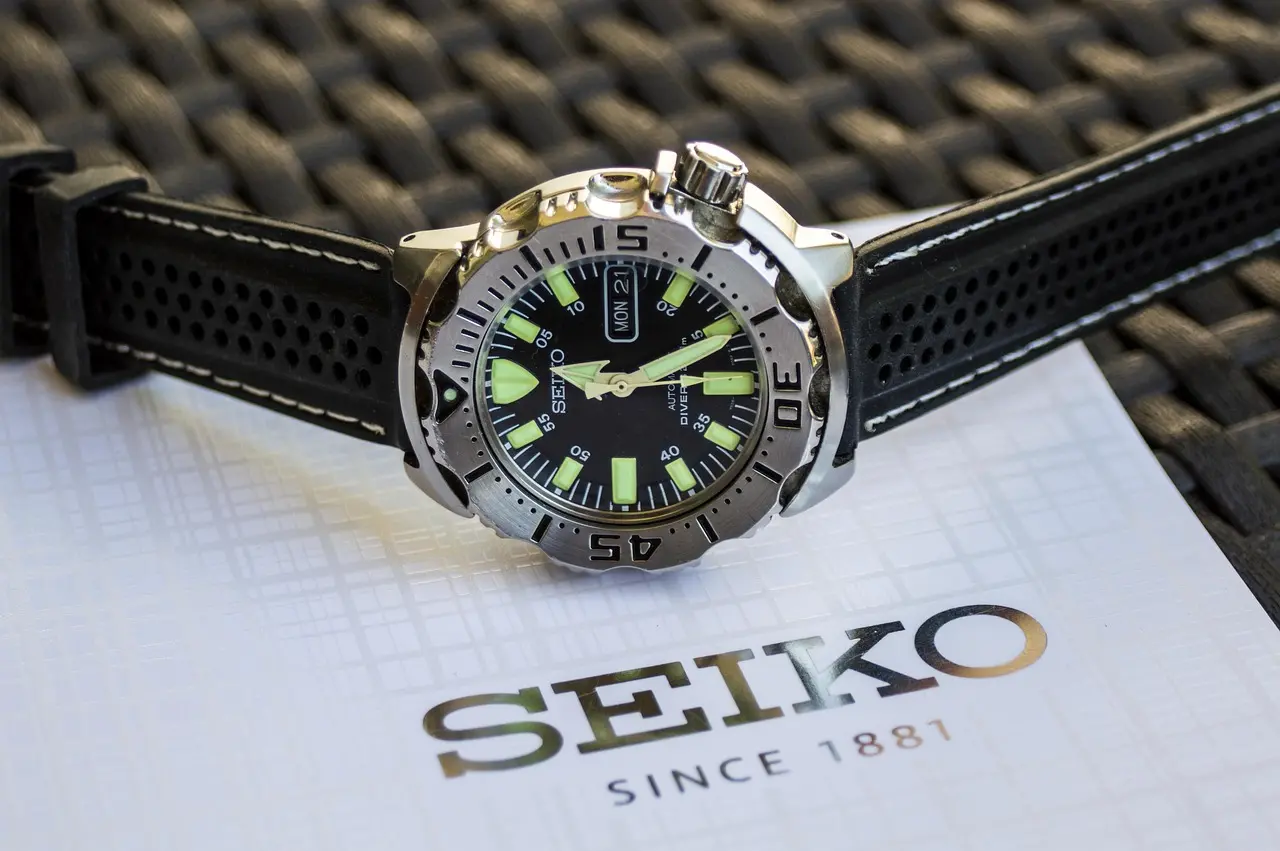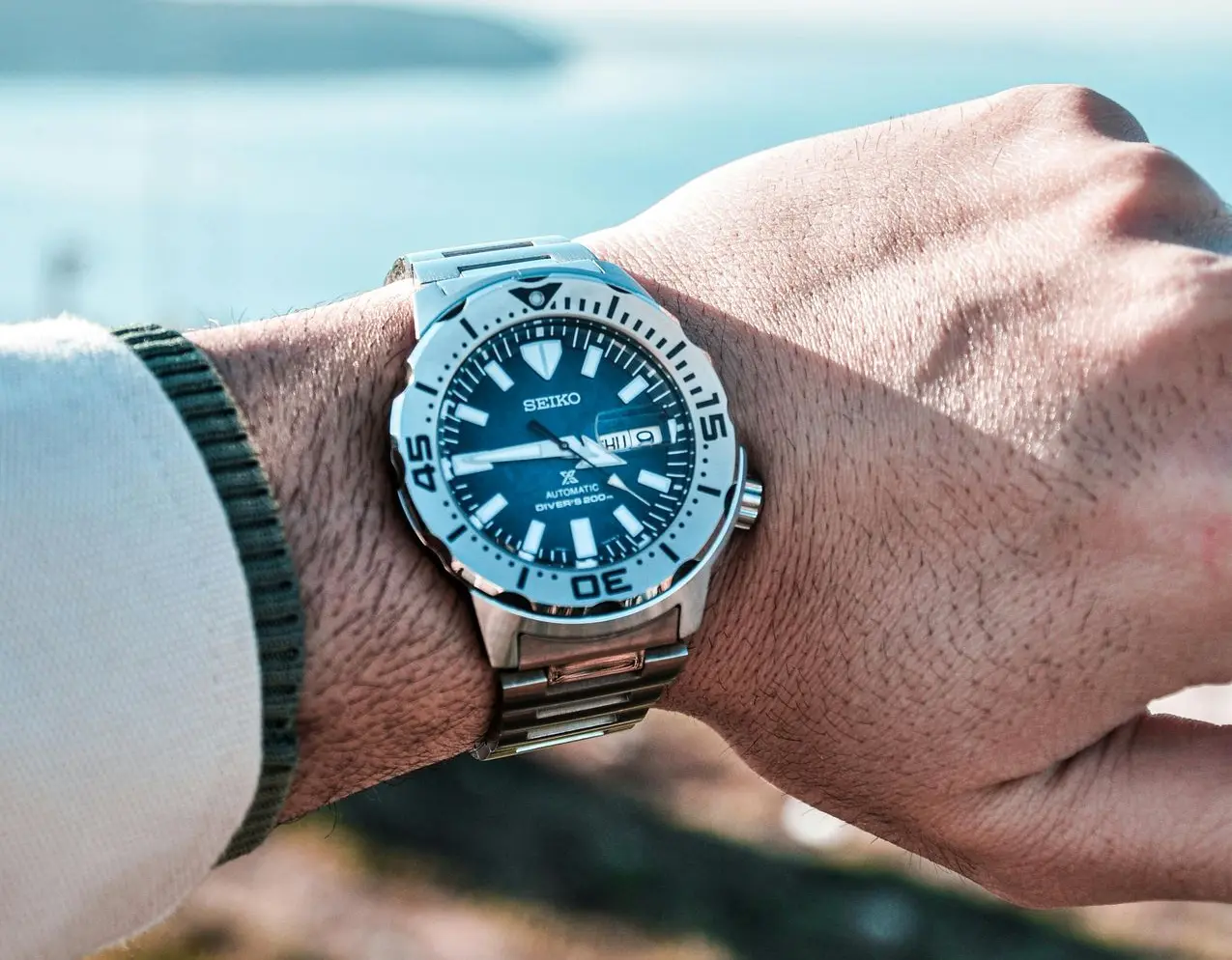The first automatic watch is your choice, and this may be an exciting but confusing experience. The number of styles, brands, and features to be tried is enormous. There is nothing to worry about, and with this easy guide, you are bound to find the right watch based on the things that truly matter that is style, size, movement, and trusted brands that fit your lifestyle.
What is an Automatic Watch? Understanding the Basics
An automatic watch is an automatic timepiece that self-winds by detecting the movement of the wrist. It doesn't need a battery. There is a little rotor in there, which spins as you go. This movement accumulates power in a mainspring, which drives the hands and makes the automatic watches of the smooth sweeping movement they are known to have.
1. The Meaning of "Automatic"
“Automatic”—this denotes that the watch will have the ability to wind itself automatically. You do not have to bend the crown on a daily basis. It is also made convenient and fascinating to wear as long as it is on your wrist.
2. How an Automatic Watch Works
Within the watch, the rotor rotates with the movement of your wrist. This movement turns back the mainspring and gradually sets the gears and hands moving. It is an ideal combination of art and technology, with small gears coordinating with each other perfectly.
3. Automatic Watches vs. Quartz Watches vs. Manual Watches.
- Quartz watches are battery-operated and highly precise and are not very mechanical.
- Winding of manual watches has to be done daily.
- Automatic watches are like the best of both worlds; on the one hand, they are convenient, durable, and brimming with craftsmanship.
They suit those who are on the entry level and need a stylish, reliable, and traditional timepiece.
Why Choose an Automatic Watch for Your First Timepiece?
Having an automatic watch is not just about keeping time, but it is about possession of a historical artwork. Understanding how to choose your first automatic watch also means appreciating the art and precision behind these timepieces.
Craftsmanship and Heritage
All automatic watches are crafted with art. It is not merely a tool but mechanical art, and this art is created by professionals who have mastered the art of doing it over generations.
1. Sustainability and Longevity.
Automatic watches have a life span of decades provided they are well maintained. They do not require batteries, and thus they are eco-friendly and sustainable.
2. Sentimental Attachment and Culture.
Watching an automatic watch usually becomes a souvenir. It can be a record of what you accomplish and what you do, what you achieve, what you commemorate, and something you can leave behind to say you were proud of.
3. Sentimental Attachment and Culture.
Watching an automatic watch usually becomes a souvenir. It can be a record of what you accomplish and what you do, what you achieve, what you commemorate, and something you can leave behind to say you were proud of.
How to choose the right Automatic Watch: Key Buying Factors
These are the main things to consider when purchasing your first automatic watch. Learning how to choose your first automatic watch properly ensures your choice matches your needs and personality.
1. Define Your Purpose
Consider the time when you will wear it. Does he or she use it for everyday, work, or occasions? This knowledge helps to reduce the choices you have.
2. Style: Representation of Personality.
Select a fashion that suits your lifestyle and character:
- Dress watches: These are simple and classy and are suitable to wear during work or when attending a formal event.
- Diving watches: Water resistant, durable, and sporty.
- Field watches: No fuss, no frills.
- Pilot watches: Huge dials with large, easy-to-decipher figures.
- Skeleton watches: Demonstrate the internal mechanism of the watch—best in a contemporary, high-end experience.
Choose the one that you feel is natural to you.
3. Fit and Size: Discover the Right Proportion.
Comfort matters. The dimensions of watches are in millimeters:
- Small wrists: 36-40 mm
- Medium wrists: 40-42 mm
- Large wrists: 42-46 mm
A watch must fit comfortably, not too large and not too small.
4. Case Material and Finish
The watch case secures the internal components of a watch.
- Stainless steel: Cultured and powerful.
- Titanium: Light and non-allergenic.
- Ceramic: Shiny and touch roller proof.
Every material possesses a different feel and look.
5. Watch Dial and Design Details.
The dial determines the personality of your watch.
- Few dials are appropriate with business attire.
- Dials are textured or colored to make them modern.
Look through hands, markers, and color contrast; they make your first impression.
6. Crystal Type: Which Makes the Watch Face SECURE.
Sapphire crystal: It is the most resistant and scratch-proof.
- Glass mineral: The cheapest, yet trustworthy.
- Acrylic: It is easy to carry but can easily be scratched.
- Sapphire or mineral glass is best when it is your first watch.
7. Quality of Movement: The Heart of your Watch.
The flow of time is the ticking of your watch.
- Swiss movements (such as ETA or Sellita): Swiss movements are renowned for being precise and crafted.
- Japanese movements (such as Seiko or Miyota): good and cheap.
Both are excellent options for a first-time learner.
8. Power Reserve
This is what it means by the length of time that your watch is not on your wrist. Most automatics last 36-80 hours. In case you do not wear your watch every day, you should find one that has a longer power reserve.
9. Water Resistance Ratings
Not every watch is made to be water resistant. Always check the rating:
- 3 ATM: Splash-resistant
- 5 ATM: Handles light rain
- 10 or more ATM: Swimming/diving.
10. Brand Reputation
Select a brand that is reputable in terms of quality and reliability. Examples of good novice brands are Seiko, Citizen, Orient, Tissot, Hamilton, and Leitzeit Automatic Watches.
11. Budget and Value
Set a comfortable budget:
- Under 300: Good entry-level, such as the Orient Bambino.
- $300-700: Fine everyday watches such as Seiko 5 Sports or Leitzeit.
- $700-1000: Quality options excluding Rolex, such as Tissot PRX or Hamilton Khaki Field.
It may not always be the most costly watch that is the best—it is the best that fits you.
Features Worth Paying Attention To
1. Lume (Glow in the Dark)
Lamps you to read the time in the dark--good for travelling or at night.
2. Date Display
A date window, however, is optional and gives the piece a more convenient look.
3. Display Caseback
A clear back allows you to view the beautiful movement within—ideal for first-time owners.
4. Straps and Bracelets
- Leather: Classic and elegant.
- Metal bracelet: tough and it is multidimensional.
- NATO or rubber: Soft to use and sporty.
Common Mistakes To Avoid
- Buy it not just because it is a brand or it looks nice.
- Watch out against uncomfortable watches.
- Warranty of checks and services.
- Always purchase items from reputable sellers in order to avoid counterfeits.
These minor measures save your investment and help to have a great experience when learning how to choose your first automatic watch wisely.
Best Automatic Watches for First-Time Buyers (2025 Picks)
Watch Model | Type | Movement | Price Range | Why it’s great for beginners |
Seiko 5 | Sports | Japanese | $250-350 | Good style, reliability, entry level. |
Leitzeit | Dress/Sport | Swiss inspired | $400-900 | Modern design, luxury look, long lasting and perfect for everyone. |
Orient Bambino | Dress | Japanese | $120-200 | Classy and cheap. |
Citizen NJ0150 | Every day | Japanese | $300-400 | Well moving and with modern design. |
Tissot PRX Automatic | Dress/Sport | Swiss | $700-1000 | Luxury feel and precision. |
Hamilton Khaki | Field | Swiss | $400-700 | Rough and adventure based. |
These watches, such as Leitzeit Automatic Watches, are good value watches with good movements as well as classic fashion. You can have it sporty or classy, and either way they are all great to begin your watch experience.
How to Maintain Your Automatic Watch
1. Wearing and Winding
Wear and keep your watch in order to keep it running. Should it stop, shake it, or wind it some.
2. Using a Watch Winder
In case you have more than one automatic watch, you have a watch winder, which will keep your watches moving when you are not wearing them.
3. Regular Servicing and Care
Have your watch serviced every 3-5 years. Wipe it with a soft cloth, do not use magnets, and keep it in a cold, dry box or pouch.
Conclusion: How to Choose Your First Automatic Watch
Making a decision on how to choose your first automatic watch is a matter of compromising between style, comfort, and quality. Keep in mind that you need to concentrate on trusted brands, good movement, and a design that depicts your image.
In Leitzeit, we are sure that every watch must not tell the time but it must tell your story. We have our reliable automatic watches that blend technology and design to accommodate all kinds of lifestyles. Today, choose your first automatic watch with the confidence of knowing we have the best brand. We will begin your trip to an eternal chic today.
Quick FAQ
What is the life of automatic watches?
Well taken, they may last decades—even a lifetime.
Can I overwind my automatic watch?
No, most of them have an inbuilt overwinding prevention system.
Do the automatic watches lose time?
The norm is a few seconds a day. They are maintained by regular service.
How should I store my watch?
Store in a cool, dry place, preferably a box or winder.
What is the ideal automatic watch for small wrists?
The Seiko 5 (38mm) or Leitzeit Automatic Watch are models that are small enough to fit smaller wrists.